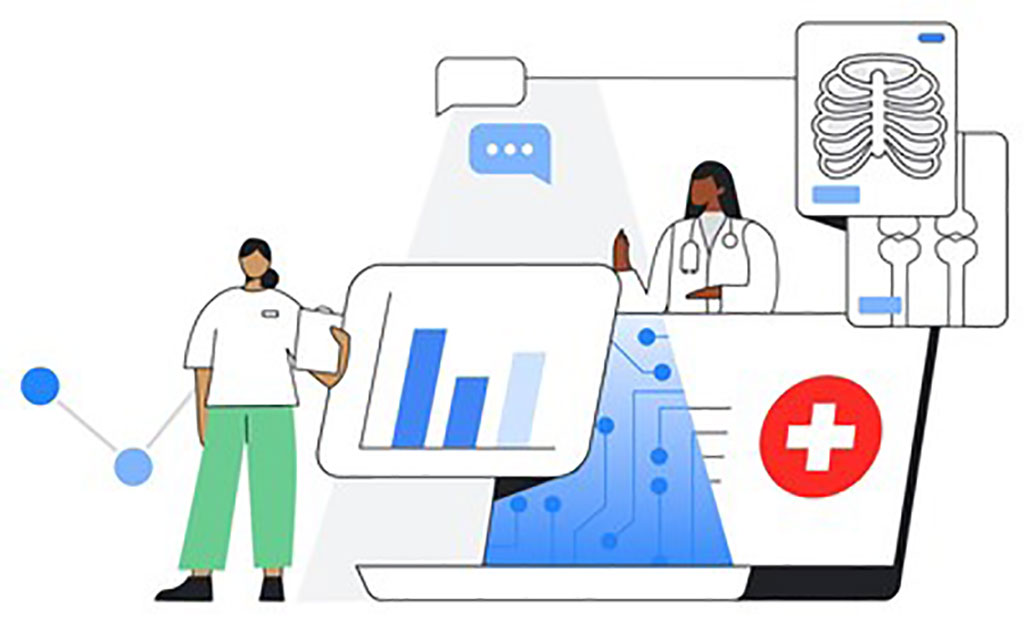Computers Better at Measuring Some Radiology Images
By MedImaging International staff writers
Posted on 17 Feb 2010
Scientists have automated the measurement of a key region of the knee in images with a computer program that performs much faster and just as effectively as humans who interpret the same images. Having more precise data about wear-and-tear on this portion of the knee--a blend of fibrous tissue and cartilage called the meniscus--could lead to its use as a biomarker in predicting who is at risk for developing osteoarthritis, according to researchers. Posted on 17 Feb 2010
The meniscus consists of two C-shaped disks that rest between the thigh and shinbones. It provides cushioning, evens out weight distribution, and reduces friction. Under normal circumstances, radiologists use rulers to measure specific portions of an image. This new program replaces that method with automated measurements of several magnetic resonance imaging slices of the meniscus. These measurements can then be used to determine the total volume of the structure of the meniscus for comparison over time.
After developing the program, the scientists found that the automated measurements were either as effective or more reliable than human measurements of mild to moderate cases of knee degeneration. More research is needed to make the program equally strong in measuring severely damaged knees, researchers say.
On a case-by-case basis, manual interpretation takes between 7 and 20 minutes, and the computer program completes its segmentation in 2 to 4 minutes. The scientists reported that the program could be reworked to make it work even more rapidly without sacrificing accuracy. "Our ambitious goal is to change the way radiology is practiced,” said Dr. Metin Gurcan, senior author of the work, and an assistant professor of biomedical informatics at Ohio State University (Columbus, OH, USA). "Right now, radiologists don't have the tools to make more than crude measurements of most images. So one thing we are doing is providing those tools.”
The research appears online in January 2010 and is scheduled for later print publication in the journal Osteoarthritis and Cartilage. Researchers believe that if the meniscus, and ultimately, other parts of the knee--can be more accurately monitored for changes over time, the structures could serve as important predictors of an individual's risk for developing osteoarthritis, the leading cause of disability in older adults.
Dr. Gurcan and colleagues used imaging data from the Osteoarthritis Initiative (San Franscico, CA, USA), a massive U.S. study of the disorder, to develop and test new programming designed to automate radiologic measurements. Ohio State's Medical Center was one of four clinical centers selected as part of the U.S. initiative to collect information and design disease standards intended to speed drug development. Osteoarthritis is the most common type of arthritis and is characterized by the breakdown and erosion of cartilage that causes pain, swelling, and loss of motion in the joint.
The initiative has collected images and other data on 4,796 study participants. This computer programming study used 24 randomly selected images from that collection--10 from patients with no symptoms, and 14 from patients diagnosed with osteoarthritis. In developing the program, the researchers created algorithms based in part on the intensity of the pixels within each component of the images taken of study participants' knees. "We set up a process of elimination for consideration. It says bright pixels are not the meniscus. And we know some areas in the images are bone, ligaments, and cartilage, so the algorithms won't let those areas be considered the meniscus,” said Mark Swanson, a medical student at Ohio State and lead author of the paper. "Once the programming is complete, our algorithms know the anatomy of the knee.”
The program reads each of up to two-dozen slices to designate and segment the three-dimensional structure of the meniscus. As it moves through the images, the program also compares the previous slice to the current slice, reevaluates, and checks its work.
At this point in the development, the program requires some human input. A person must scroll through images manually, find the first slice that includes an image of the meniscus, and place a point within that area of the image. A second point must be placed on the meniscus in the last slice in which that part of the knee anatomy appears. "From there, the computer takes over,” Mr. Swanson said. "It looks at that first point and starts growing around it.”
Once the segmentations are complete, clinicians are able to calculate the volume, thickness, intensity, and any tears in the meniscus--all data that can be compared with calculations made with data from later images. If changes in the meniscus correlate with osteoarthritis symptoms, this area of the knee could become a target for prevention and treatment of the disorder.
To check the validity of the programming, the researchers compared calculations from their study with typical measurements of the meniscus found in previous research. The figures matched. The scientists also compared the computer program's outcomes to interpretations of the same images conducted by five people specifically trained to manually segment the meniscus within the images. The computer is equally as skilled as two humans whose interpretations of the same image are compared, and exceeds the accuracy of a single person interpreting the same image twice. "The solution is not to get thousands of people to do the work. The solution is to rely on computers,” Mr. Swanson said. "The computer is better at some things than people are.”
The researchers are currently working to automate the entire process, including the establishment of start- and end-points for the program. They also are developing programs to automate measurement of other areas of the knee: bone, cartilage, ligaments, and the quadriceps muscles. All of the images will be obtained from the Osteoarthritis Initiative. "In my opinion, this disease will not have a single signature. I think we'll need to look at a lot of different things to understand how this disease develops,” Dr. Gurcan said.
Related Links:
Ohio State University
Osteoarthritis Initiative














